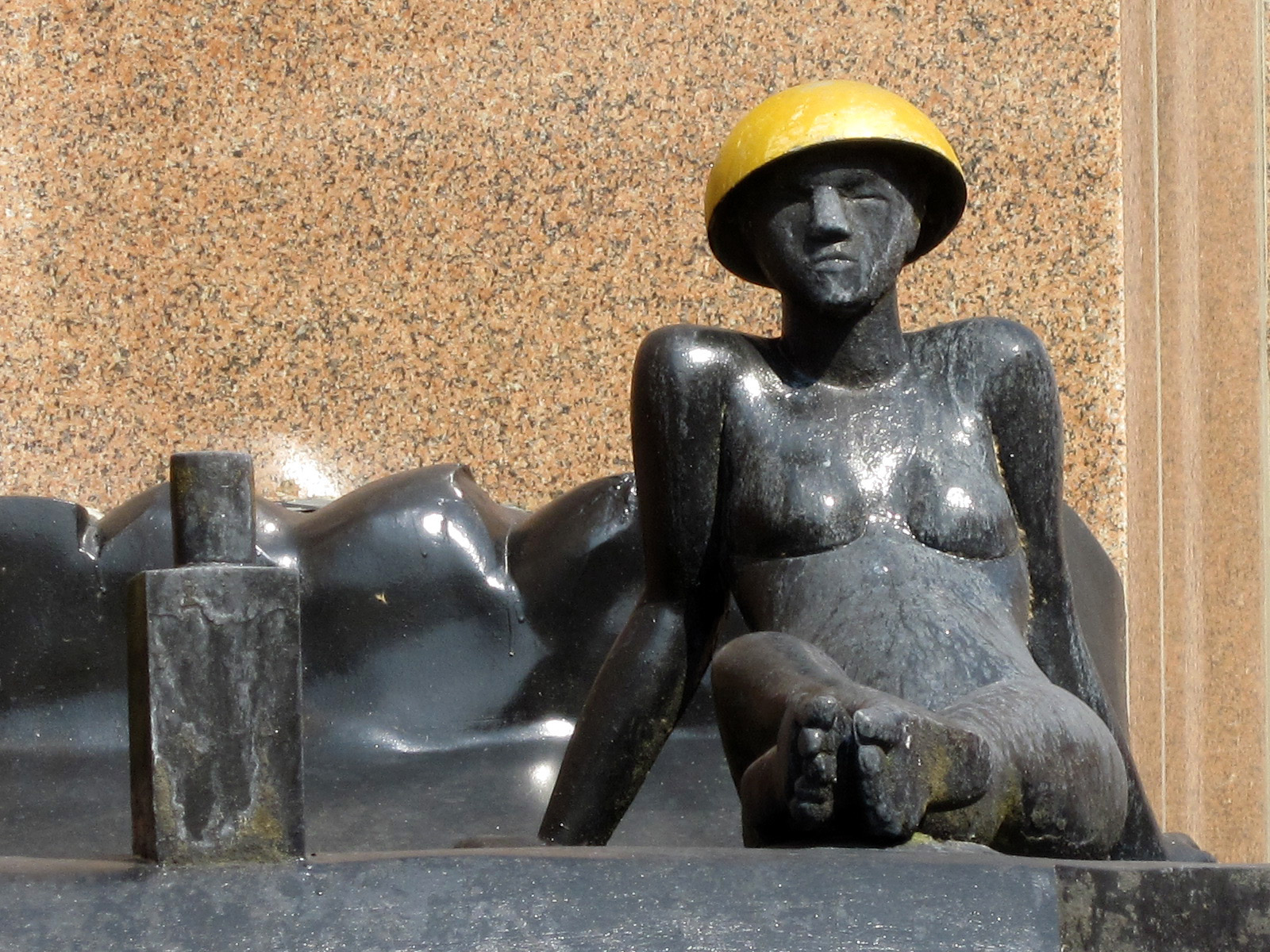 Berlin is the second largest city in Europe (after London) with 3.4 million people. It’s a big, sprawling megalopolis big with a very good public transport system. We took the S-bahn (the Shnell train) from the Shoenefeld airport to the Zoo, transferred to the U-bahn (the Unter ground train) and went one stop to Wittenberger Platz, the home of The KaDeWe (Kaufhaus Des Westens) department store, one of the most fashionable in Europe and definitely one of the best food hall we’ve ever seen.
Berlin is the second largest city in Europe (after London) with 3.4 million people. It’s a big, sprawling megalopolis big with a very good public transport system. We took the S-bahn (the Shnell train) from the Shoenefeld airport to the Zoo, transferred to the U-bahn (the Unter ground train) and went one stop to Wittenberger Platz, the home of The KaDeWe (Kaufhaus Des Westens) department store, one of the most fashionable in Europe and definitely one of the best food hall we’ve ever seen.
Our Berlin apartment is in the Schoneberg district, a 7 minute walk from the Wittenberger Platz U-bahn. This is the area where Marlene Dietrich was born, and is now buried.
It’s comfortable, on a quiet street in a nondescript 1970’s building. The apartment looks better when you’re inside. It’s a very recent renovation. All the appliances are new. The bathroom is clean and well designed. It has one of those little European shower boxes, but with a big sunflower, super power nozzle showerhead giving lots of really hot water and a door that doesn’t leak onto the floor, yet. The owner also installed 72 overhead LED puck lights into the ceiling. At night he ceiling looks like a sky of stars, if you really use your imagination.
Normally the temperatures of Berlin in July are around 22°C (72°F) in the day and 18°C (65°F) at night. We thought we’d be wearing our long pants, but we hit a pocket of hot weather. The temps are soaring to 35°C (95°F) during the days and there is no air conditioning in the apartment. The women who greeted us here told us it is very rare for Germans to put AC in their apartments. It never gets hot here. After a very cold and long winter, the Berliners were rejoicing in the sun and heat. We were wishing for air conditioning.
The architecture of Berlin spans at least six different historical periods, gothic, 13th-18th century Prussian classical and baroque, 19th century neo-classical Empire buildings, jugendstil (art nouveau) and Bauhaus buildings of the 1919-1933 Weimar republic, Aryan Fascist Nazi buildings of the 1933-1945 Third Reich, big concrete Communist architecture from 1946-1990 and the modern glass and steel of the post unification.
 Potsdamer Platz was totally razed when the wall came down and rebuilt into a futuristic cityscape built around the Sony Center, the Kulturforum, the Gemaldegalerie (13th to 18th century art), the Neue Nationalgalerie (modern art) and the Berlin Philharmonic. Pieces of the Berlin Wall are positioned in various locations around the square as art installations. It’s an interesting look at what was and what is.
Potsdamer Platz was totally razed when the wall came down and rebuilt into a futuristic cityscape built around the Sony Center, the Kulturforum, the Gemaldegalerie (13th to 18th century art), the Neue Nationalgalerie (modern art) and the Berlin Philharmonic. Pieces of the Berlin Wall are positioned in various locations around the square as art installations. It’s an interesting look at what was and what is.
Potsdamer Platz has glass and steel going miles in all directions, east, west, north, south, up and down. The Germans thought if they built it, they would come (they being the corporations from all over Europe). In thought it was a great idea. Rents in Berlin are some of the most economical in the EU. But, a lot of the buildings are still vacant, 70 billion Euros in debt. Timing is everything.
Although Germany is the wealthiest country in the EU, Berlin is it’s poorest city with an unemployment rate hovering around 18%, but as Klaus Wowerit, the “gay” mayor of Berlin has said “Berlin ist arm, aber sexy.” (“Berlin is poor, but sexy.”)
We first got acquainted with the city by foot and U-bahn. The U-bahn fare for 120 minutes is €2.20. The all day pass is €6.60. We went for the day passes. Once you stamp your ticket the clock starts running and you never have to show the ticket again, unless a Berlin Muni Policeman asks to see it, which did happen once. Failure to have a ticket results in a €44 fine.
Berlin has an honor system for the trains and although they do have a graffiti problem (like all major cities) the U and S bahn systems are “hands off”. The ubiquitous trains (and stations) are sparkling clean and very comfortable. The S-bahn train we took from the airport even played a little pre recorded oompah music when arriving to each station coming into the central city; a cute welcome.
We walked around the trendy shopping area of Kufurstendam near our apartment. We took the U-bahn over to Potsdamer Platz and the ultramodern modern Berlin. We stopped for lunch and ate wurst (sausages).
Germany is the wurst capital of Europe and Berlin is the wurst capital of Germany, and I’ve joined the ranks of Berliners as a currywurst fan. Berliners consume over 70 million currywurst a year. It was voted the favorite food of Berlin in 2005. This spicy pork sausage, covered with chili powder, cayenne pepper and a thick tomato sauce, is considered one of Berlin’s culinary masterpieces. The tasty treat was created in 1949 by Herta Heuwer, a former shop assistant at the KaDeWe department store, who mixed some tomato puree together with 12 Indian spices she got from UK military personnel living in her district. In 1951 she patented the sauce as “Chillup”. She poured the mixture over some pork sausages, mixed in a few other spices and started selling the “currywurst” at a local street stand. It was an instant success. Over the years, Berliners became addicted to the taste.
Nothing goes better with a wurst than a beer. Germany is also the home of some of the best beer in the world. On these really hot summer days, we developed a taste for the Alsterwasser, a mixture of beer and lemonade. The English call it a “Shandy”, the French call it a “Panaché”, the Spanish call it a “Clara” and the Germans call it “Radler” or “Alsterwasser”. The bottled version I found from the local brewery Berliner Kindl is called “Radler”. It uses real lemonade. If you order an alsterwasser from a café you’ll probably end up with a blend of beer and either Fanta or Sprite. Go for the Radler.
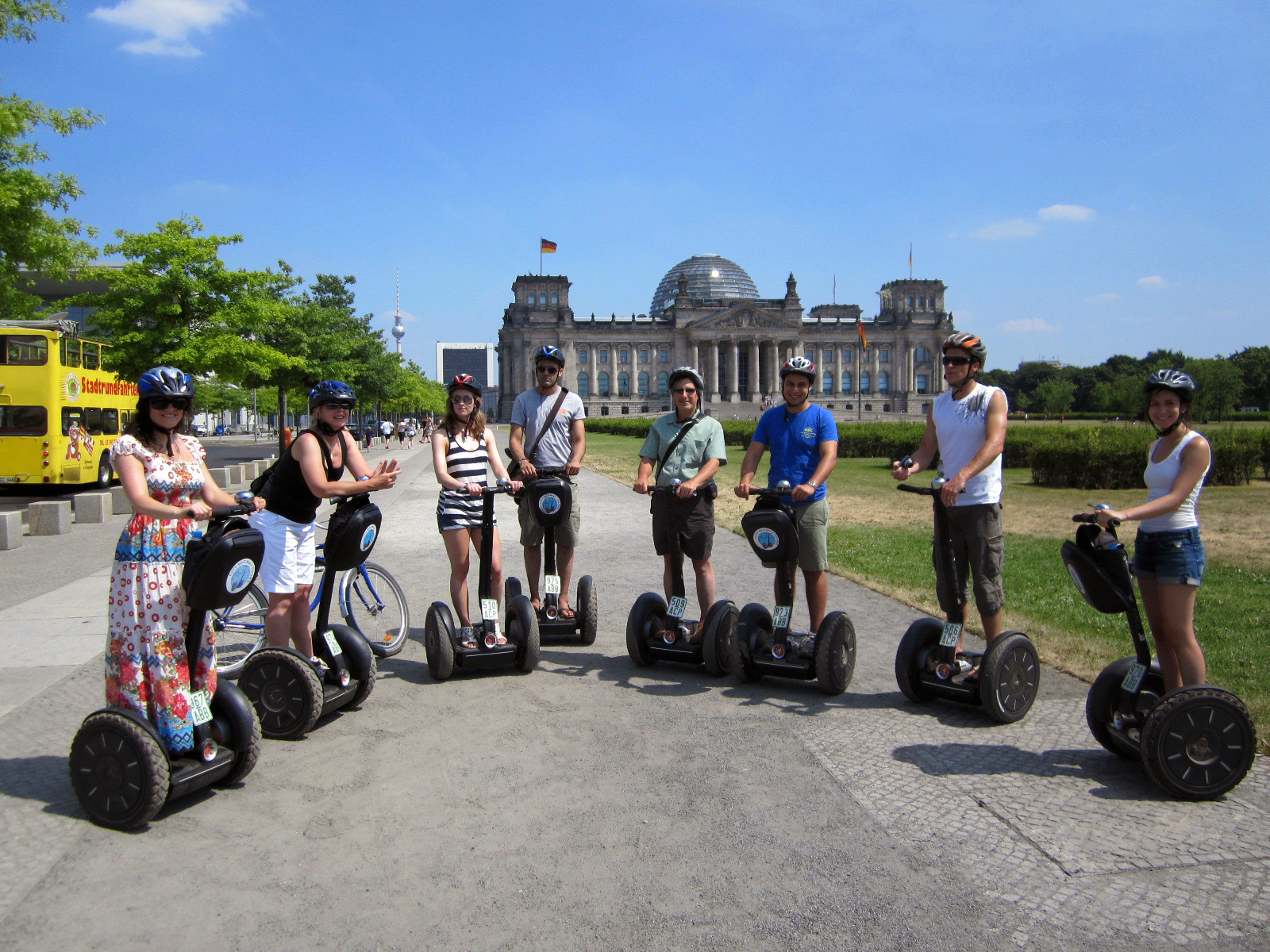 Gretchen discovered a 4 hour Segway Tour of Berlin from Fat Tire Bicycle rentals. It sounded like a great idea. Neither of us had ever been on a Segway and so off we went to Alexanderplaz, under the shadow of the East Berlin Fernsehturn, the giant disco ball TV Tower that dominates the skyline for miles, and into the heart of old Communist East Berlin.
Gretchen discovered a 4 hour Segway Tour of Berlin from Fat Tire Bicycle rentals. It sounded like a great idea. Neither of us had ever been on a Segway and so off we went to Alexanderplaz, under the shadow of the East Berlin Fernsehturn, the giant disco ball TV Tower that dominates the skyline for miles, and into the heart of old Communist East Berlin.
We immediately fell under the spell of the Segway. It’s amazing how intuitive these things are and within minutes we were lunging forward, backwards and doing 360° spins. OK, I admit that people on Segways do look really dorky, especially when wearing crash helmets, but when your on the Segway you can’t see how silly you look, you can only feel how great it is.
Our tour guide Walid, a Bengaladesh, Muslim, Gay, former global finance IT expert, heavy metal guitarist, Segway tour guide was a nonstop 4 hours of historical wisecracks with the rapid delivery of Robin Williams. Walid is funny, totally irreverent, interesting and exhausting.
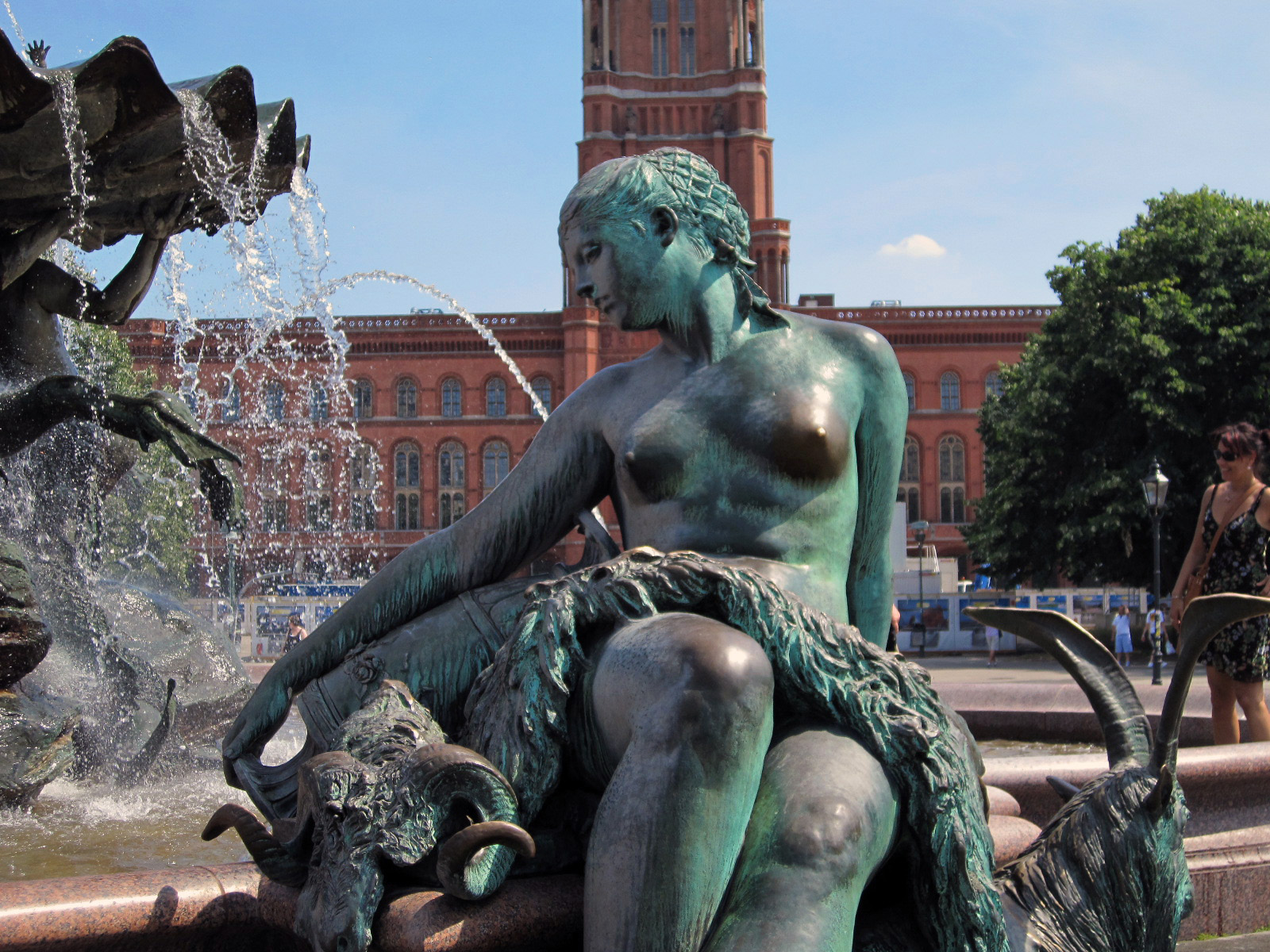 One of the first stops of the tour was a short distance away in Alexanderplatz to the Neptunebrunnen (The Neptune fountain) of Neptune riding on top of the cascading water while watching over the goddesses of the four rivers of Poland; Elbe, Rhine, Vistula and Oder. According to Walid, because the unemployment rate of Berlin is so high, at night unemployed sad men come to the fountain and sit on the laps of either Elbe or Oder and rub their breasts either for good luck or personal pleasure. The breasts of the statues are polished from rubbing, but Walid’s sole intention is to entertain us, and he did a very good job of it.
One of the first stops of the tour was a short distance away in Alexanderplatz to the Neptunebrunnen (The Neptune fountain) of Neptune riding on top of the cascading water while watching over the goddesses of the four rivers of Poland; Elbe, Rhine, Vistula and Oder. According to Walid, because the unemployment rate of Berlin is so high, at night unemployed sad men come to the fountain and sit on the laps of either Elbe or Oder and rub their breasts either for good luck or personal pleasure. The breasts of the statues are polished from rubbing, but Walid’s sole intention is to entertain us, and he did a very good job of it.
 We traveled on to the Marx Engles Forum where the statues of the 2 philosophers (Marx seated and Engles standing at his side) make them look like an old married couple. Walid tells us the reason the lap of the seated Karl Marx is so shiny is from all the young boys who were forced to sit on his lap for family photos.
We traveled on to the Marx Engles Forum where the statues of the 2 philosophers (Marx seated and Engles standing at his side) make them look like an old married couple. Walid tells us the reason the lap of the seated Karl Marx is so shiny is from all the young boys who were forced to sit on his lap for family photos.
We made out way past a few of the standing remains of the Berlin Wall, past the crowds of tourists at the “Checkpoint Charlie” museum on Friedrichstrasse, stopping briefly by the small park with a sign telling us the remains of Hitler’s Bunker are under our feet, and then over to the exhibition “Topography of Terror” on the grounds of the former Prinz Albrecht Palais on Wilhelmstrasse, where the Gestapo and the SS were headquartered. Berlin is filled with memorials from sadder days.
We rode our Segways through the crowds of German soccer fans, faces painted with the colors of the German flag, German flags worn as capes; horns blasting loudly, empty beer bottles clanking into the recycle bins in anticipation of the game against Argentina later in the day. By the way, Germany did upset the favorite Argentina in a blow out 4-0 victory. The streets were wild with celebration. We were told it would have been worse if they lost.
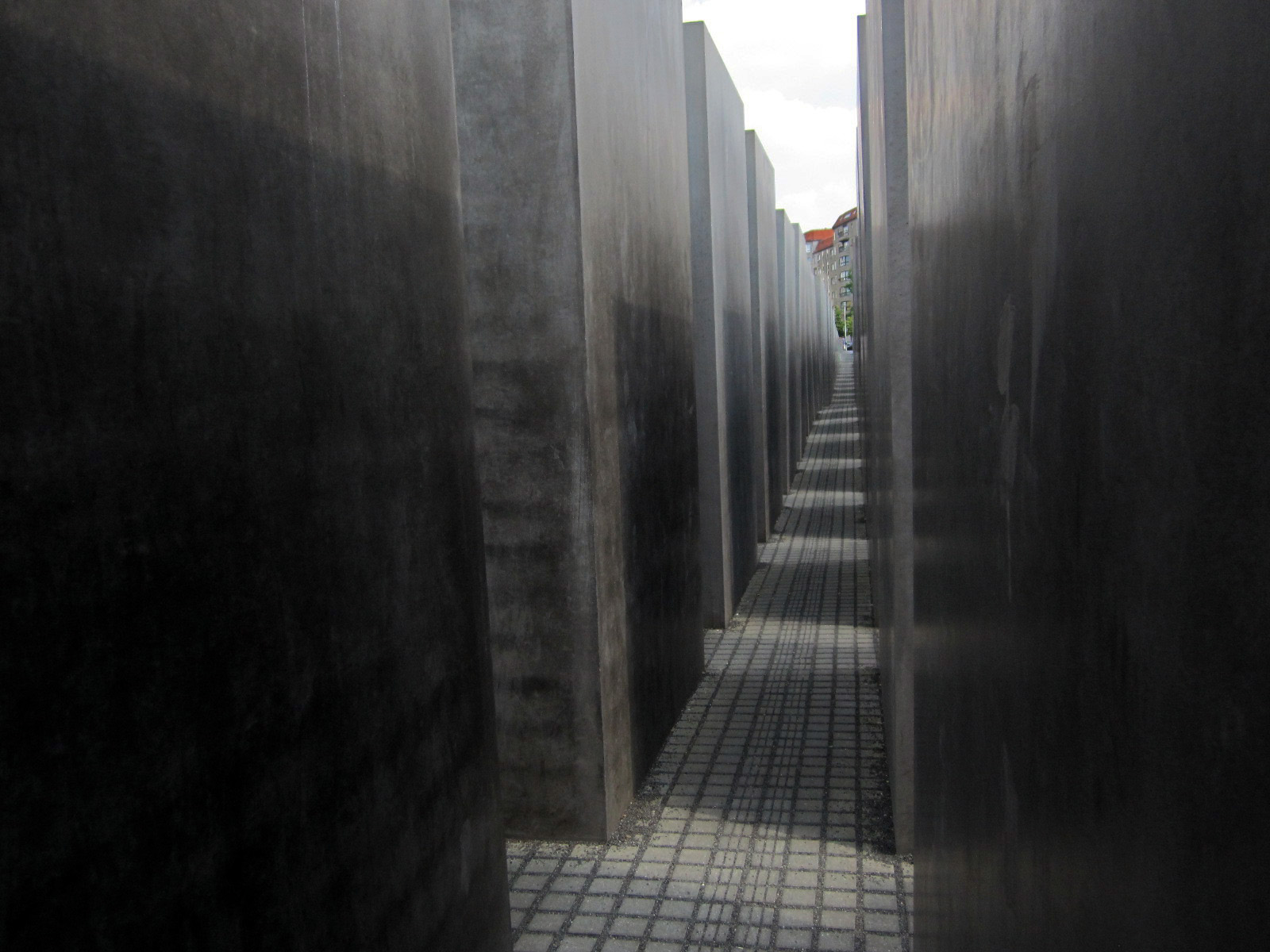 We stopped at the “Memorial to the Murdered Jews of Europe” or the Holocaust Memorial, a 19,000 square meter space filled with 2,711 concrete pillars of various heights, designed in a manner to make you walk through them and meditate about the atrocities Nazi Germany perpetrated against 6 million European Jews.
We stopped at the “Memorial to the Murdered Jews of Europe” or the Holocaust Memorial, a 19,000 square meter space filled with 2,711 concrete pillars of various heights, designed in a manner to make you walk through them and meditate about the atrocities Nazi Germany perpetrated against 6 million European Jews.
There has been a lot of controversy over this memorial. It took over a dozen years just to get it approved through the German Bundestag (mostly where to put it and what it would be). Then, in 2003, less than two years before it was about to open, a Swiss newspaper dug up some dirt about the German company Degussa, who was producing an anti-graffiti substance called Protectosil to cover the pillars. The product creates a coating that would make graffiti easy to remove. During World War II, a subsidiary of Degusa, known as Degesh was involved in the making of the Zyklon B gas used in the gas chamber of the concentration camps. The Jewish community wanted them out but finally changed their minds when Degusa said they would donate the Protectosil to the monument for life. The deal was too good to turn down. In the first year of the monument, swastikas were sprayed onto the pillars 5 different times. The Protectosil worked perfectly. There haven’t been any further attacks since 2006.
After the Holocaust memorial was approved, Berlin’s Gay community complained there was no memorial for the approximately 55,000 homosexuals persecuted by the Nazis between 1933-1945. Close to 15,000 of them were killed in the camps. Germany does have the largest gay and lesbian community in Central Europe, maybe in all of Europe. Collectively they have a big political voice. In 2003 the Bundestag agreed to erect the “Memorial to Homosexuals persecuted under Nazism” and in 2008, an approximate 3.5 meter (11.5’) tall concrete cube was revealed in the Tiergarden. There is a window on one side and when you peek in you’ll see a film loop of two men kissing in a park.
All seemed well until the Homosexual Memorial brought complaints from the Lesbian magazine EMMA who argued they also needed representation for the lesbian women persecuted, incarcerated and killed during the war. And so the decision was made to show the two men kissing for two years and then change the film loop to show two women kissing in the park.
So far, so good, until complaints from the Gypsy Sinta and Roma groups hit the Bundestag. Where was their memorial?
A Memorial to the Sinta and Roma persecuted under Nazism is currently underway. Two million Euros have been allotted and the memorial will be erected just to the south of the Reichstag building. Berliners still have somewhat mixed feelings about the Gypsies who are still plying their trade of separating you from you money all over the city.
Germany is spending as many Euros as they can spare to build these memorials, almost as if they are trying to buy absolution for the war crimes.
When I was a kid growing up in southern Connecticut I saw so many tributes to the American Indians exterminated by the English troops. The streets, towns, restaurants, river and even the State name is named after them, as if they were revered pillars of the early growth of our country, when in fact it was just a “mea culpa” by the English settlers for wiping them out.
In Berlin there is no end to monuments and memorials dedicated to the injustices of the Nazis and the Soviets.
The Neue Wache (New Guard House) is the memorial site of the victims of war and tyranny on the Unter den Linden, the main thoroughfare from the Brandenburg Gate to the Museum Island..
The deportation memorials on the Putlitz Bridge and on Gleis 17 (track 17) at the Grunewald S-Bahn station commemorate the more than 50,000 Berliners who were deported to the concentration camps.
The “Leere Bibliothek” (Empty Library) beneath Bebelsplatz (the Public Library) commemorates the book burning ordered by Joseph Goebbels.
The “Spiegelwand” (Mirror Wall) on Hermann-Ehlers-Platz commemorates the atrocities against Jewish citizens of Steglitz.
The former concentration camp Sachsenhausen is located just outside Berlin, in Oranienberg.
And then there is one of the most famous of all Monuments, the burnt out ruins of the Kaiser Wilhelm Memorial Church that still stands as a bombed out relic on the Kurfurstandamm, a constant reminder of the war.
There is even a memorial to Claus von Stauffenberg and the German Resistance on Stauffenbergstrasse, commemorating the failed attempt to assassinate Hitler.
Countless parts of Berlin Wall still standing as a memorial to the horror of the Soviet East Berlin. The East Side Gallery on Mühlenstraße is a 1.3 km section that was painted by famous artists from all over the world. There are photos along Friedrichstrasse near the Checkpoint Charlie museum outlining the events that separated Berlin for close to 45 years. And if that isn’t enough, you can visit The Stasi Museum at the former Ministry for State Security (Stasi).
These are just a few of the many. Through the memorials, Germany hopes to ensure that the horrors inflicted and endured from 1933 through 1990 will never happen again.
 Berlin has embraced it’s past in all seriousness and sometimes with a shrug and a laugh, saying it happened and it wasn’t good, but now it’s over so let’s move on.
Berlin has embraced it’s past in all seriousness and sometimes with a shrug and a laugh, saying it happened and it wasn’t good, but now it’s over so let’s move on.
These days you can take a tour of the city in a 1970’s East German Trabant. These cars are one of the symbols of the Soviet Era. Now they’re one of the modes of tourism. I’m sure there is a Soviet Concentration Camp theme park in the future. There is already one of these outside Vilnius in Lithuania. Remembering the Soviet Years with laughs is frowned on by many but permitted by most. However, laughing at the war crimes of the Third Reich is totally forbidden.
Berlin sits on a vast body of water. Supposedly the name Berlin stems from the old Polabian (another lost ancient language) word stem “berl” which means swamp. Weather it was a swamp or not, there is a lot of water here and a large series of canals flowing through and under the city.
In the middle of two of these canals, just off Berlin’s grand thoroughfare, the Unter den Linden, is the Spree Island. This is where Berlin first developed in the 13th century. This was the home of the Prussian Kings. Now it’s the home of the Museumsinsel, the Museum Island.
Quite a few European Royals of the late 18th century jumped into the new trend of sharing the love of art with their subjects. The Louvre in Paris, the Prado in Madrid and the British Museum in London all go back to this time. Not to be outdone, the Prussian King Wilhelm III opened the Museum Island.
There are 5 museums on the island.
The Altes Museum was built between 1823-1830 by the Kaiser’s favorite architect, Karl Friedrich Schinkel, the same man who designed the spiked top Prussian helmet and the Iron Cross, which is indeed a cross made of Iron.
The Pergamon Museum was finished in 1930. It was built o house the reconstructed Alter of Pergamon, the Market Gate of Miletus and the 48 meter (157.5′) long Babylonian Ishtar Gate covered with magnificent glazed tiles of an amimal procession.
The Bode Museum opened in 1904. The Neues Museum was finished in 1859 and then finished off during the World War II Allied bombings of Berlin. The Neuse just reopened in October 2009 under the redesign of British architect, David Chipperfield.
The fifth Museum on the island, the Altes Nationalgalerie, houses a painting collection from the classical period through the Wiermar Republic of the early 1900’s. Once you get into paintings it gets a little confusing as to what is in the Altes Nationalgalerie and what is in the Kulturforum (near Potsdamer Platz). Their collections seem to overlap.
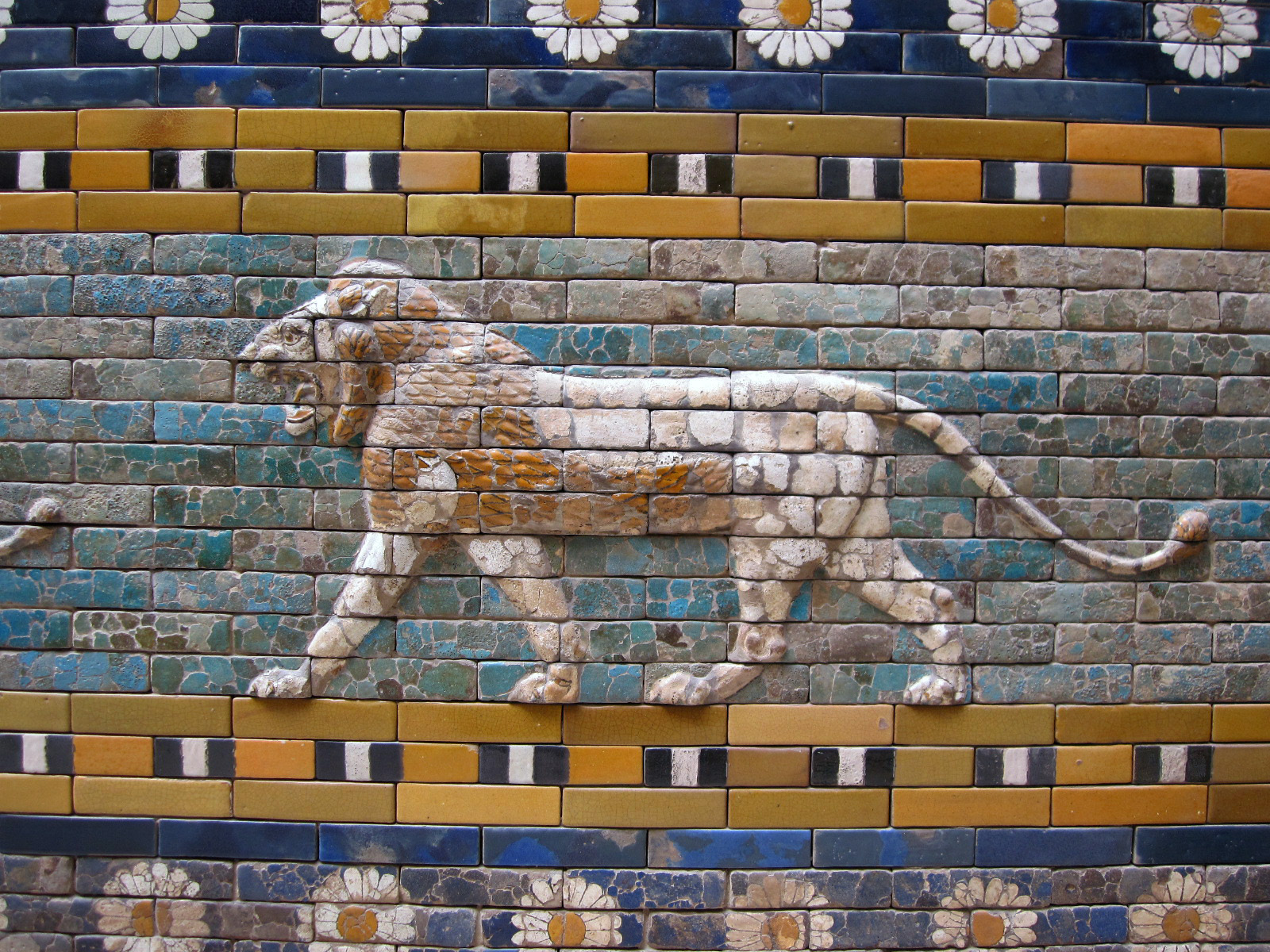 The Pergamon and the Neuse Museums can easily take a full day. These Museums house the greatest collection of pre-biblical artifacts in the world, going back over 6,000 years.
The Pergamon and the Neuse Museums can easily take a full day. These Museums house the greatest collection of pre-biblical artifacts in the world, going back over 6,000 years.
The 2nd century BC Pergamon Alter is reconstructed to actual size although most of what is here is a recreation by the German Archeologists. When I was first here in 1989, I actually thought it was all authentic. Once you get closer you can see what is real and what is a very good recreation. The same goes for the reconstructed 2nd century AD Market Gate of Miletus, an ancient Greek city. It is amazing to see this 56’ high by 95’ wide entrance gate sitting inside of a museum. The Germans of the early 20th century felt a need to reconstruct the exhibits leaving no doubt of what they should have looked like 2000 years ago. In some ways it’s really impressive and kind of looks like a movie set. In other ways it’s a little presumptuous on their part, but then history is always rewritten by those who are still living it.
Through the center arch of the Miletus gate, you walk into the room of the 1st cent. BC Ishtar Gate of Babylon built under of Nebuchadnezzar II. It’s a little far fetched historically, but it works visually in the museum. The blue and gold glazed tiles are beautiful and once again, as you look closely you’ll see which tiles are authentic and which ones were recreated for the reconstruction of the gate. Considering these tiles (the ancient ones) were dug out of over 300′ of rubble, it’s amazing any of them survived.
Approximately 850,000 people visit the Pergamon annually. The audio guide that comes free with the entrance ticket is very good and just these three rooms can keep you occupied for a good 2-3 hours.
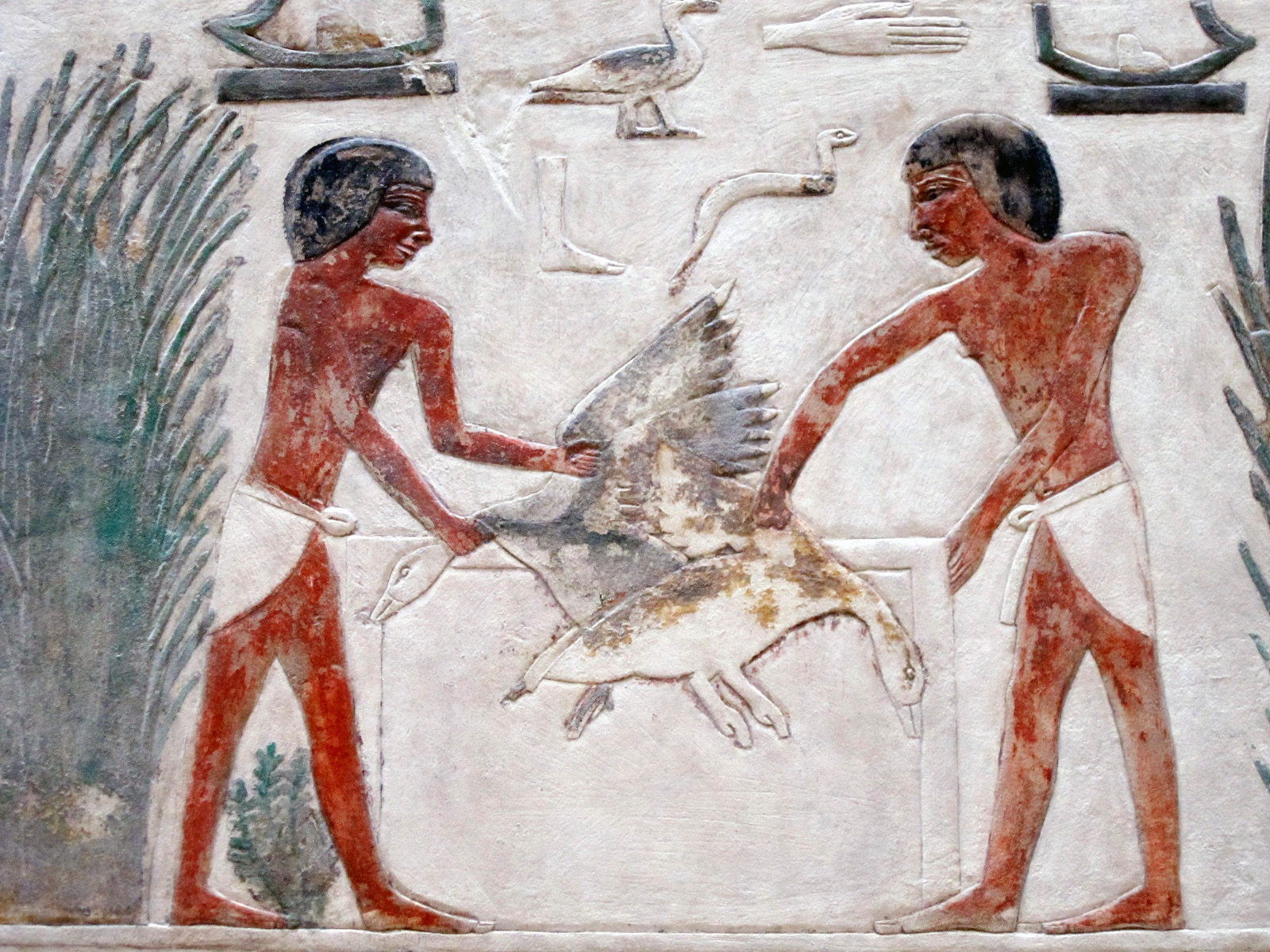 Friedrich August Stuler, a student of the Kaiser’s favorite architect, Karl Friedrich Schinkel, designed the Neues Museum. It closed in 1939 after the building suffered great damage from the bombed during the War. After the German reunification, close to 300 million Euros was put back into the museums to get them working again and the Neues, under the direction of British architect, David Chipperfield, opened in October 2009. This is the best museum retrofit of an old building I’ve ever seen, encompassing all the 19th century beauty of the old Friedrich Stuler building while modernizing it for the 21st century. Chipperfield left many of the old details including the partial remains of some 19th century Egyptians frescoes that now also look like ancient artifacts and added some clever touches like the “adventure through the underworld” on the underground level.
Friedrich August Stuler, a student of the Kaiser’s favorite architect, Karl Friedrich Schinkel, designed the Neues Museum. It closed in 1939 after the building suffered great damage from the bombed during the War. After the German reunification, close to 300 million Euros was put back into the museums to get them working again and the Neues, under the direction of British architect, David Chipperfield, opened in October 2009. This is the best museum retrofit of an old building I’ve ever seen, encompassing all the 19th century beauty of the old Friedrich Stuler building while modernizing it for the 21st century. Chipperfield left many of the old details including the partial remains of some 19th century Egyptians frescoes that now also look like ancient artifacts and added some clever touches like the “adventure through the underworld” on the underground level.
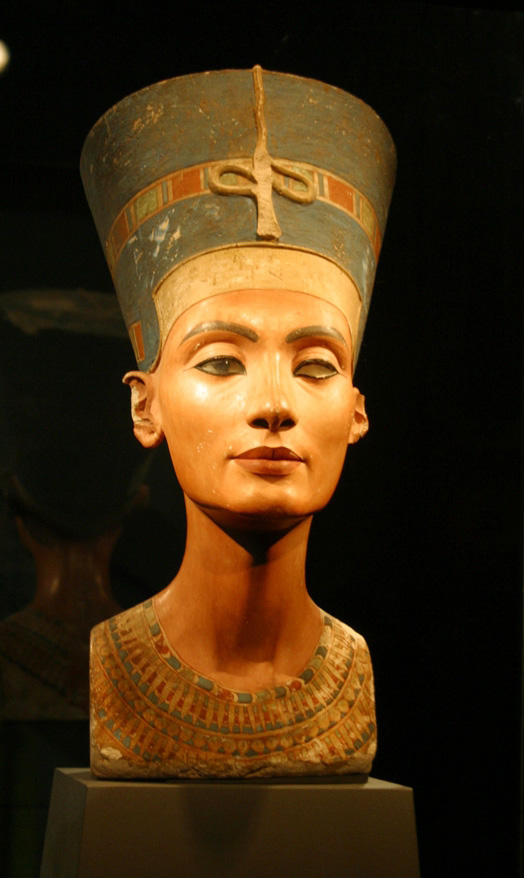 The highlight of the Neues museum is the 3300 year old bust of Queen Nefertitti housed in a glass case in the middle of a grand domed 19th century hall. It’s the only piece in the room.
The highlight of the Neues museum is the 3300 year old bust of Queen Nefertitti housed in a glass case in the middle of a grand domed 19th century hall. It’s the only piece in the room.
Nefertitti was the co-regent alongside the Pharaoh Akhenaten, who left all political affairs to his wife while he concerned himself more with the spiritual aspects of his new monotheistic religion.
She is beautiful. More beautiful than any of the photos we’ve seen of her in magazines or art books. This is not the image of a young woman with innocence or seductive beauty. She is a celebration of womanhood, a mature woman with lines of grace and wisdom.
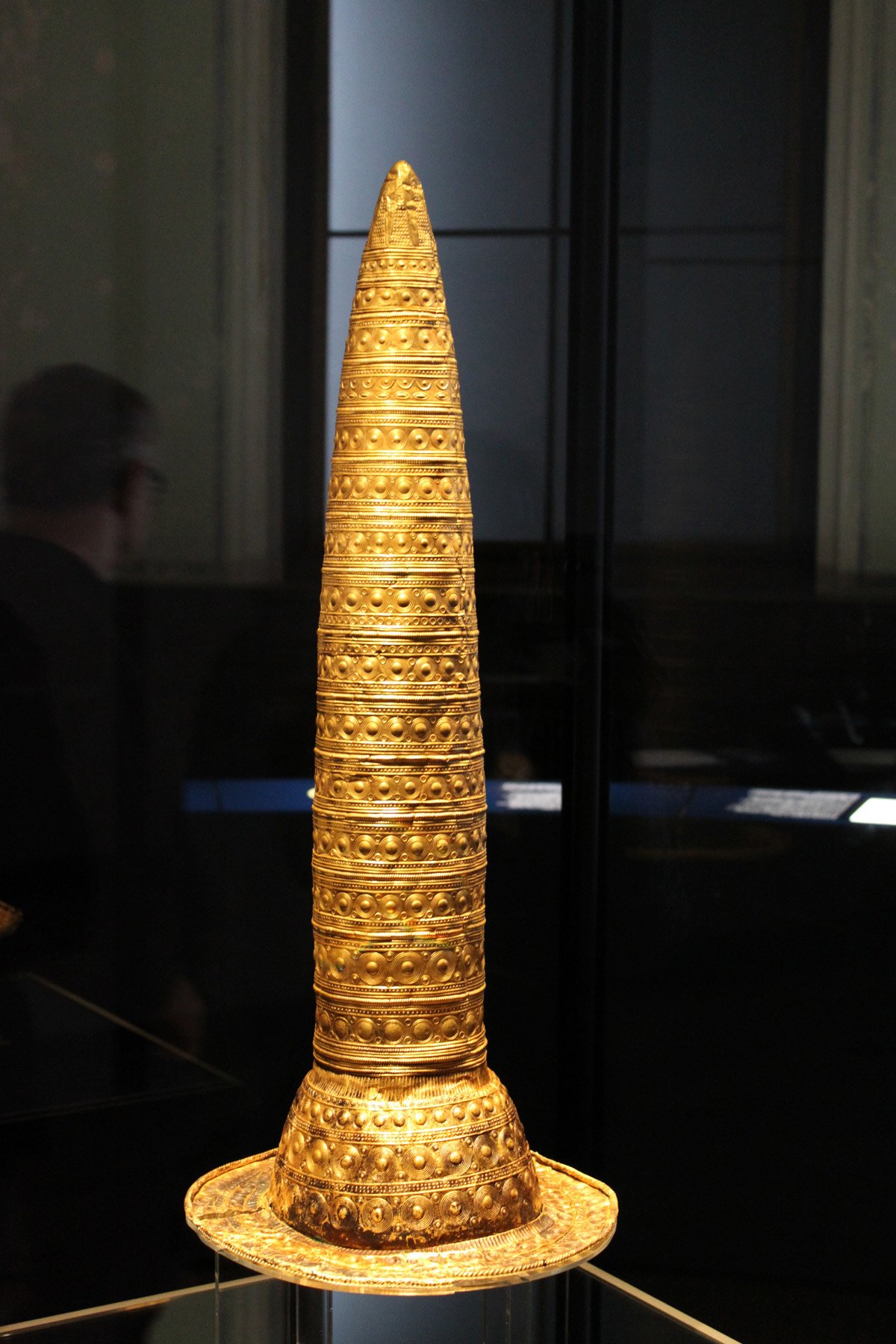 The museum also houses one of the largest ancient papyrus collections and lots of artifacts from stone age to prehistoric to Bronze age including the “Berlin Gold Hat”, a large conical brimmed gold hat. According to the explanation, it is assumed that there were a lot of sun worshipers during the late bronze age (between 1,000 and 800 BC). The hat might have served as calendars for marking holidays or special function days or possibly astronomical events. Whatever it’s for, it’s the best magical wizard hat we’ve ever seen.
The museum also houses one of the largest ancient papyrus collections and lots of artifacts from stone age to prehistoric to Bronze age including the “Berlin Gold Hat”, a large conical brimmed gold hat. According to the explanation, it is assumed that there were a lot of sun worshipers during the late bronze age (between 1,000 and 800 BC). The hat might have served as calendars for marking holidays or special function days or possibly astronomical events. Whatever it’s for, it’s the best magical wizard hat we’ve ever seen.
All the museums on the Spree Island were heavily bombed during World War II and although the Germans were able to store many of the great pieces in hiding places, the Soviets managed to find a lot of it and hauled it back to Russia. The stolen treasures (including the fabled jewelry from Troy) are now on display at the Pushkin Museum in Moscow and the Hermitage in Saint Petersburg. Supposedly in 2003 there was a treaty to return the treasures but it hasn’t happened yet. The Germans will tell you as often as possible in the many informational placards by the exhibits how the Soviets stole the treasures and will not return them. Of course you can go to Egyptian and Turkish museums where you’ll see the same sentiments towards the Germans who stole the treasures out of their countries.
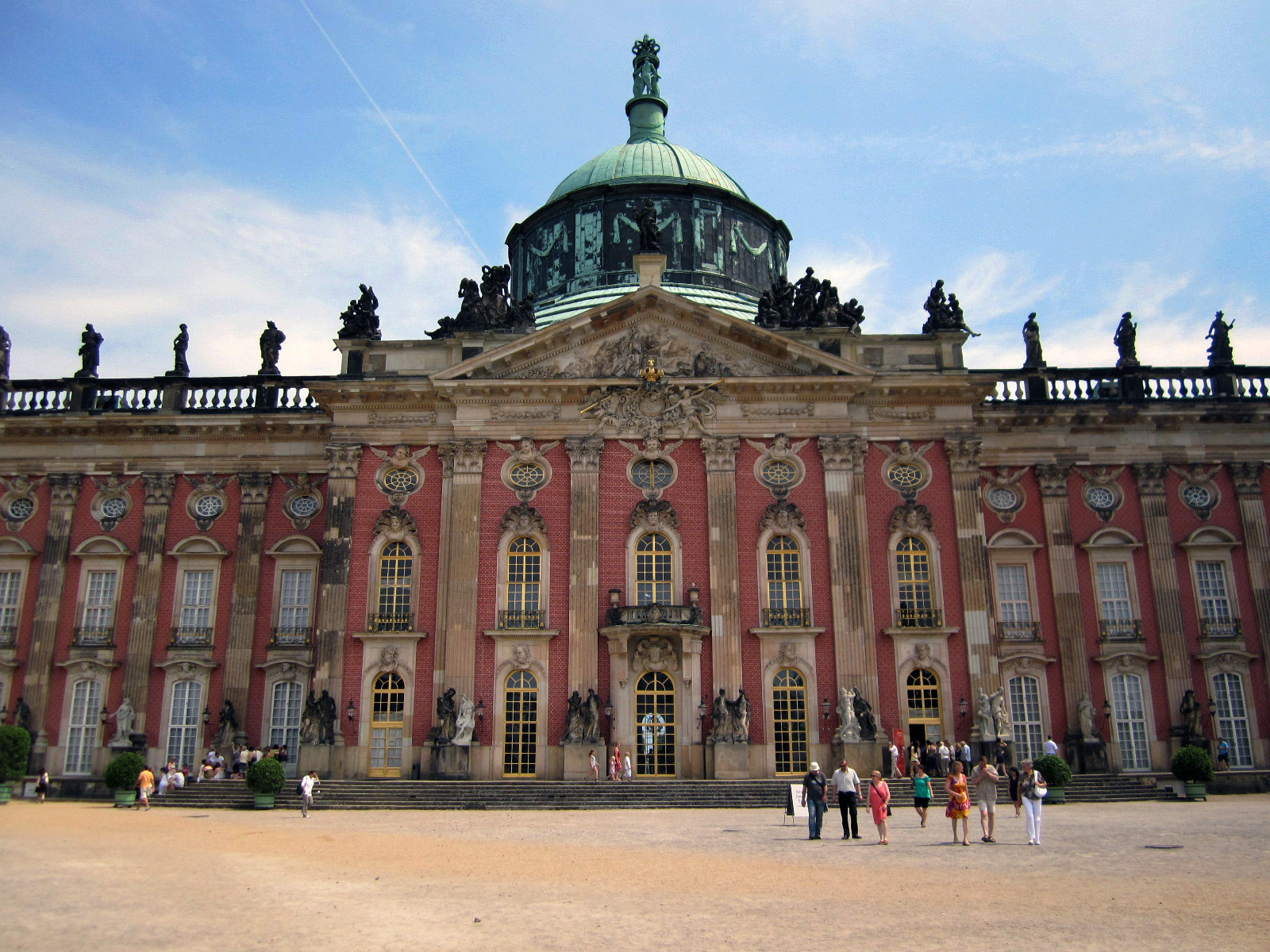 Potsdam
Potsdam
We took the S7 train out to Potsdam to take a bicycle ride through the Sanssouci Park and tour some of the 18th century Palaces of Frederick II of Prussia (Frederick the Great). Potsdam was the favorite locale of the Prussian Hohenzollen Dynasty till the curtain went down on them in 1918.
King Frederick II (Frederick the Great) built up this town during the height of the Prussian Empire. He ruled the empire from 1740-1786, the longest ruling Prussian Monarch. The Neue palace in the Sanssouci Park was built in just six years from 1763-69. This 200+ room Palace was built after the 7yr war with neighboring Silesia (now park of Poland and the Czech Republic). The floors and some entire rooms are built with Silesian Marble, just so everyone would remember the victory.
This is the largest of all the Prussian Palaces. It’s built with amazing pomp, tons of Silesian marble and a fortune in gold gilding. It’s all designed in the King’s favorite architectural style “Rococo”. In fact he loved this whimsical style so much all the Palaces of Sanssouci are referred to as Frederician Rococo.
Although the palace was used on occasion as the residence of the royals, it mostly functioned as a grand entertainment complex. There are even additional Palaces across the street for support staff.
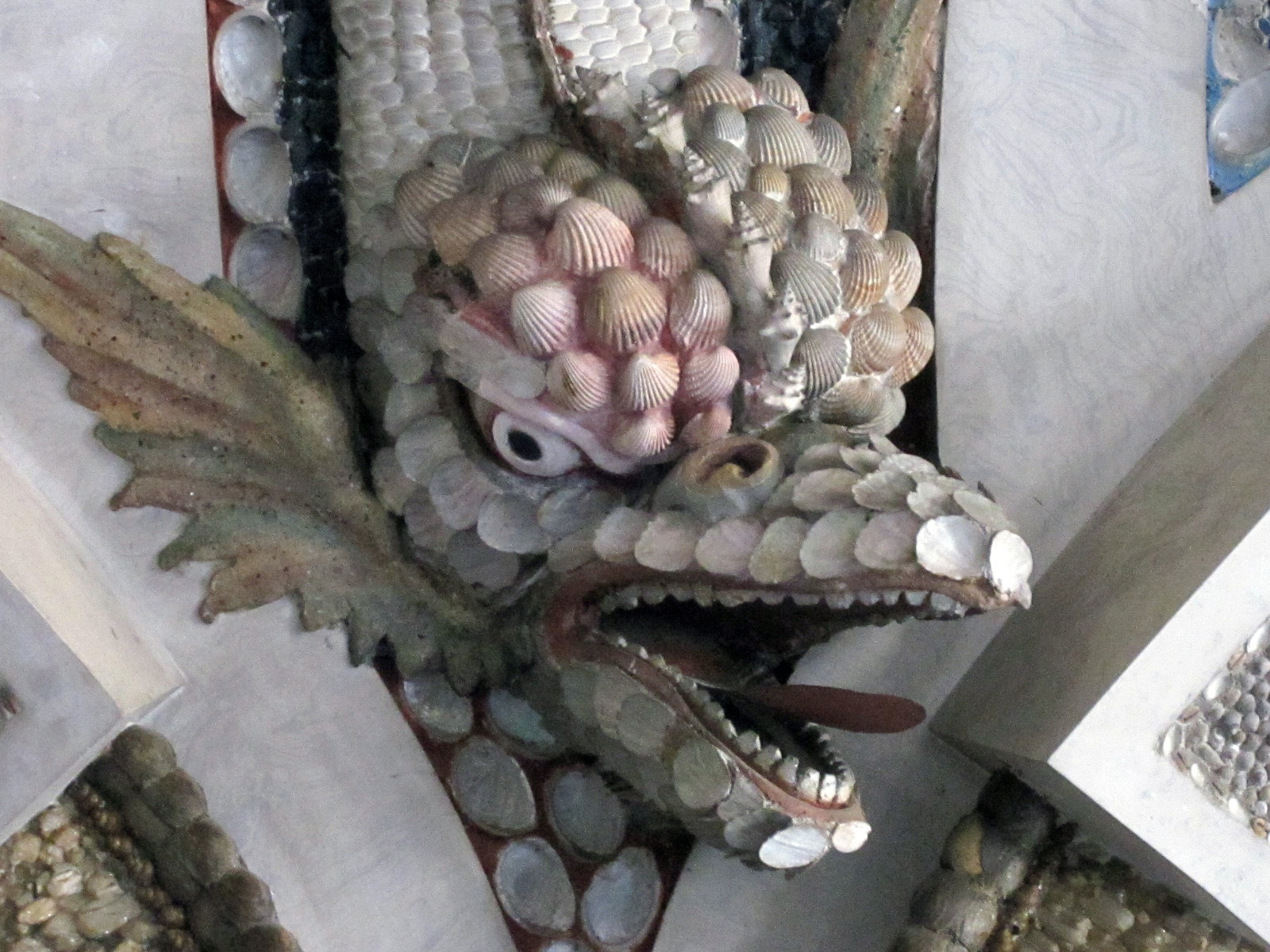 The Grotto room (our favorite) on the ground floor is made of over 1 million mollusk shells designed into sea creatures and aquatic life. The room is so whimsical the King liked to celebrate Christmas here with his extended family and watch the children as they opened their holiday gifts around the bizarre mollusk creations. Frederick had no children of his own. His father, Frederick I, forced him into an arranged marriage but it was a marriage without love and without children. When his father died, the marriage ended. Some say Frederick II was homosexual; some say he was celibate. The only think we do know is that he loved his Italian greyhounds and preferred their company to anyone else.
The Grotto room (our favorite) on the ground floor is made of over 1 million mollusk shells designed into sea creatures and aquatic life. The room is so whimsical the King liked to celebrate Christmas here with his extended family and watch the children as they opened their holiday gifts around the bizarre mollusk creations. Frederick had no children of his own. His father, Frederick I, forced him into an arranged marriage but it was a marriage without love and without children. When his father died, the marriage ended. Some say Frederick II was homosexual; some say he was celibate. The only think we do know is that he loved his Italian greyhounds and preferred their company to anyone else.
On the second floor is the large marble hall (taken from Silesia of course) soaring a full 16 meters (52’) tall, filling up two stories of the Palace. All 6500 square feet of floor is covered with Silesian Marble. Frederick really wanted to make a point of how he defeated the Silesians.
After Frederick’s death in 1786, the Palace wasn’t used much and fell into disrepair. The bombings of Allied troops in 1944 added to the decay. Under the sponsorship of German Tourism, it’s slowly getting put back together again, even though it’s hard to tell how authentic a restoration it really is. The massive brick façade of the building is actually stucco painted brick red with mortar colored lines to give the illusion of brick but I have no idea if the Palace facade was originally built this way.
The Sanssouci Palace, at the other end of the Park, was built as Frederick’s summer home and became his favorite place to live, at least from November till April. He died here in his study in 1786. The Palace was built in 2 years between 1745 and 1747. That’s right, just two years. When the King wanted something done, it happened. Right away.
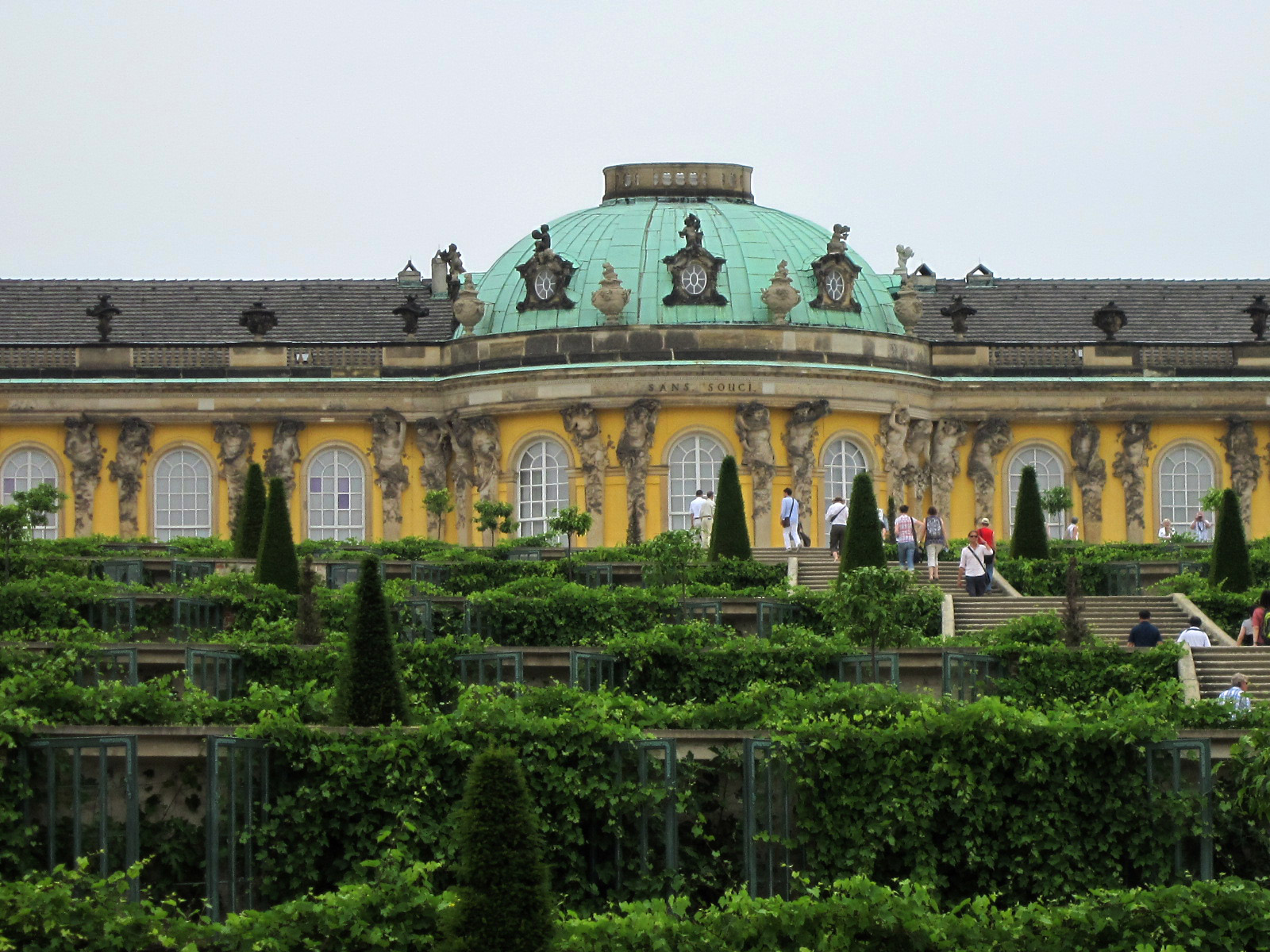 After World War II, Sanssouci became a big attraction in Soviet Germany. It was maintained and given all due respect. After the German unification in 1990, Frederick II was finally returned. It was always his wish to be buried at the summer Palace next his beloved Italian Greyhounds, overlooking the terraced vineyards onto his beloved Park.
After World War II, Sanssouci became a big attraction in Soviet Germany. It was maintained and given all due respect. After the German unification in 1990, Frederick II was finally returned. It was always his wish to be buried at the summer Palace next his beloved Italian Greyhounds, overlooking the terraced vineyards onto his beloved Park.
Unfortunately his nephew/successor (Frederick III) order the body to be buried next to his father (Frederick I) in Potsdam. During World War II, the bodies were moved to an underground bunker and later to an old deserted mineshaft to keep them safe. After the American troops stumbled on them, they were bounced around to a few different temporary resting places before finally coming back home to the Kaiser Friedrich Mausoleum at Sanssouci’s Church of Peace.
Frederick II finally got his wish and now lies in all eternity looking over the terraced hill he created back in 1745. I have no idea if the greyhounds were dug up and put in the tomb with him. I hope so.
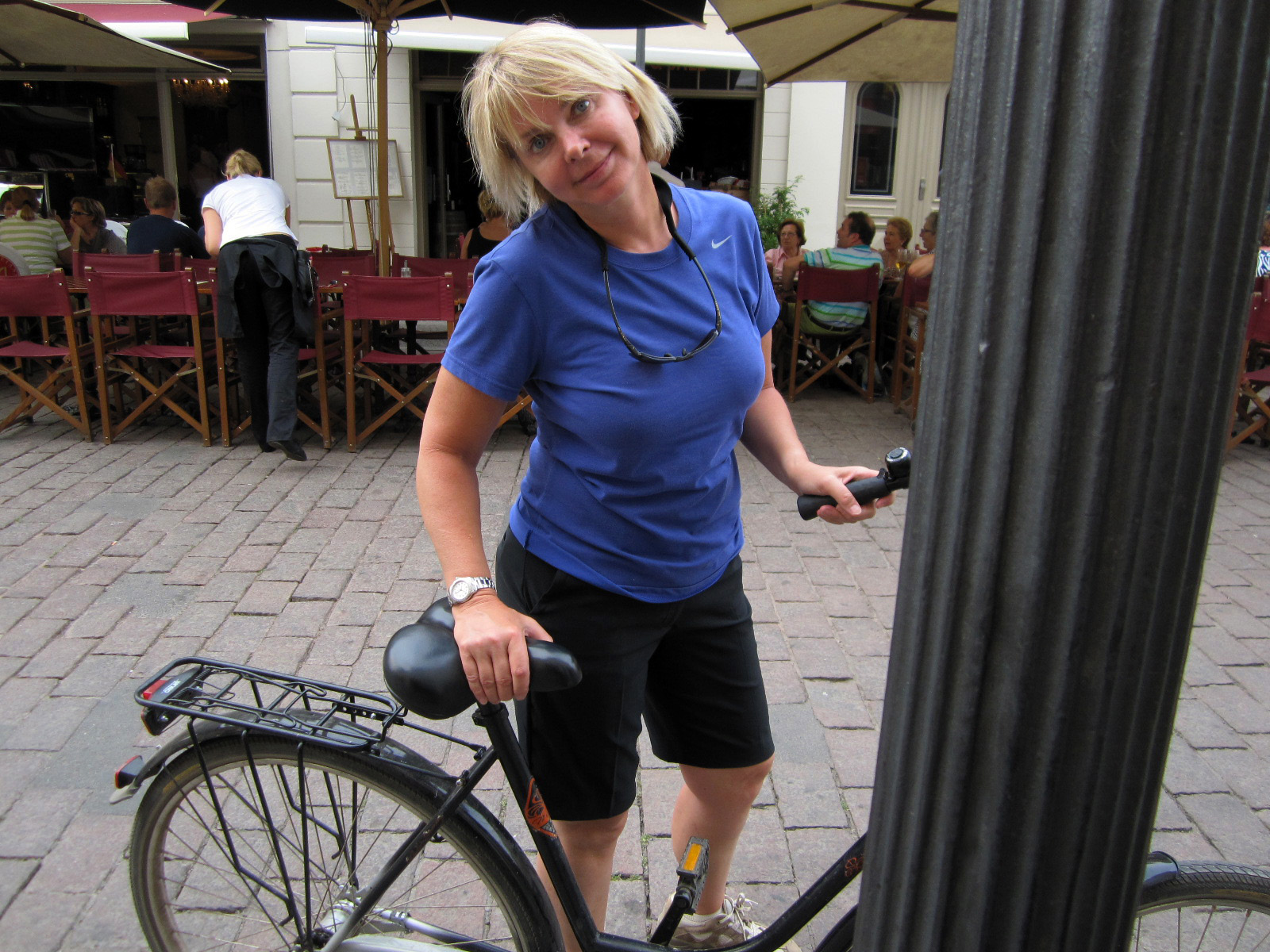 Frederick’s Sanssouci Park is a lot of fun. It’s mostly flat and there are great stops every few minutes, large fountains, statuary gardens, an obelisk, the Chinese Tea House, the Dragon House, the Orangery, an 18th century working windmill and all the small beautiful gardens still maintained as they might have been back in the days of Frederick the Great. Renting the bikes was another of Gretchen’s really good ideas.
Frederick’s Sanssouci Park is a lot of fun. It’s mostly flat and there are great stops every few minutes, large fountains, statuary gardens, an obelisk, the Chinese Tea House, the Dragon House, the Orangery, an 18th century working windmill and all the small beautiful gardens still maintained as they might have been back in the days of Frederick the Great. Renting the bikes was another of Gretchen’s really good ideas.
You must be logged in to post a comment.